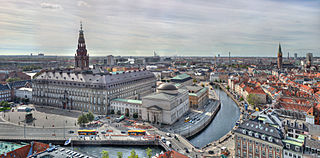
Copenhagen is the capital and most populous city of Denmark, with a population of around 660,000 in the municipality and 1.4 million in the urban area. The city is on the islands of Zealand and Amager, separated from Malmö, Sweden, by the Øresund strait. The Øresund Bridge connects the two cities by rail and road.

Ole Christensen Rømer was a Danish astronomer who, in 1676, made the first measurement of the speed of light and discovery that light travels at a finite speed. Rømer also invented the modern thermometer showing the temperature between two fixed points, namely the points at which water respectively boils and freezes.

The history of Copenhagen dates back to the first settlement at the site in the 11th century. From the middle of the 12th century it grew in importance after coming into the possession of Bishop Absalon, and the city was fortified with a stone wall during the 13th century. The harbour and the excellent possibilities for herring fishing contributed to Copenhagen's growth and development into an important trading centre. It was repeatedly attacked by the Hanseatic League as the Germans became aware of its expansion. In 1254, it received its charter as a city under Bishop Jakob Erlandsen.

Peder Skram was a Danish Admiral and naval hero.
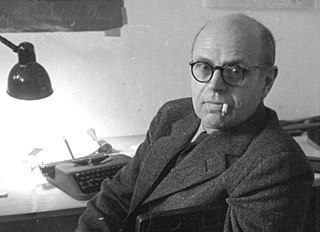
Poul Henningsen was a Danish author, critic, architect, and designer. In Denmark, where he often is referred to simply as PH, he was one of the leading figures of the cultural life of Denmark between the World Wars.
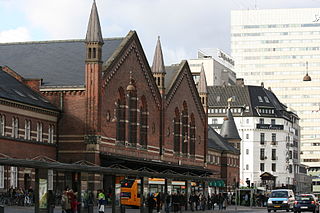
Copenhagen Central Station is the main railway station in Copenhagen, Denmark, and the largest railway station in Denmark. With more than 100,000 travellers every day, it is the second busiest station in Denmark after Nørreport station. It is located in central Copenhagen, situated between the districts of Indre By and Vesterbro with entrances from Bernstorffsgade, Banegårdspladsen, Reventlowsgade and access to platforms from Tietgensgade.

The Copenhagen Fire of 1728 was the largest fire in the history of Copenhagen, Denmark. It began on the evening of 20 October 1728 and continued to burn until the morning of the 23rd of October 1728. It destroyed approximately 28% of the city and left 20% of the population homeless. The reconstruction lasted until 1737. No less than 47% of the section of the city, which dates back to the Middle Ages, was completely lost, and along with the Copenhagen Fire of 1795, it is the main reason that few traces of medieval Copenhagen can be found in the modern city.

The Royal Danish Academy of Music, or Royal Danish Conservatory of Music, in Copenhagen is the oldest professional institution of musical education in Denmark as well as the largest, with approximately 400 students. It was established in 1867 as Kjøbenhavns Musikkonservatorium by Niels Gade – who was also the first rector –, J.P.E. Hartmann and Holger Simon Paulli on the basis of a testamentary gift from the jeweler P.W. Moldenhauer, and with inspiration from the Leipzig Conservatory and a conservatory founded by Giuseppe Siboni in Copenhagen in 1827. Carl Nielsen was a teacher in the period 1916–1919 and the rector during the last year of his life.

Ordrupgaard is a state-owned art museum situated near Jægersborg Dyrehave, north of Copenhagen, Denmark. The museum houses one of Northern Europe's most important collections of Danish and French art from the 19th and beginning of the 20th century.

Royal Copenhagen, officially the Royal Porcelain Factory, is a Danish manufacturer of porcelain products and was founded in Copenhagen in 1775 under the protection of Danish Dowager Queen Juliane Marie. It is recognized by its factory mark, the three wavy lines above each other, symbolizing Denmark's three water ways: Storebælt, Lillebælt and Øresund.
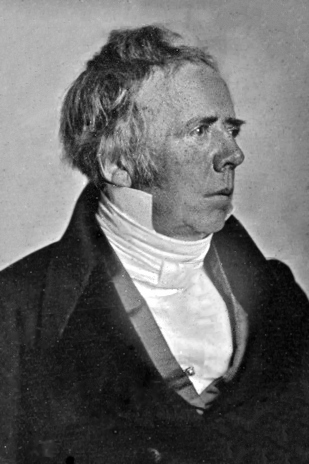
Hans Christian Ørsted was a Danish physicist and chemist who discovered that electric currents create magnetic fields, which was the first connection found between electricity and magnetism. Oersted's law and the oersted unit (Oe) are named after him.

Kai Normann Andersen was a Danish composer who wrote film scores and music for stage revues and dramas. He composed songs for over 50 films between 1930 and 1965. In the 1930s and 1940s he dominated Danish film music. He has been called "[o]ne of the most appealing personalities of our time in the light music field". Twelve of his songs have been included in the Danish Culture Canon. Connie Hedegaard and Claus Hagen Petersen list him among the 100 most important Danes of the 20th century.

DBU Copenhagen is the local governing body for association football and futsal in Copenhagen, Denmark. They are responsible for the governance and development of men's and women's football at all levels in the region. DBU Copenhagen is a member of the union of local football associations, DBU Bredde, under the Danish Football Association (DBU) and the National Olympic Committee and Sports Confederation of Denmark (DIF). The headquarters is located at the Svanemølleanlægget at Østerbro after previously having their residence at the national football stadium. Clubs situated in the municipalities of Copenhagen, Frederiksberg, Gentofte, Tårnby and Dragør can be accepted as members of DBU Copenhagen. Due to historical reasons a number of older clubs from other municipalities are also member of the association. As per 2020, the association consisted of 157 clubs and 45,627 members with the Østerbro-based club BK Skjold being the largest club membership-wise within the association and on a national level.
The 1964 Danish 1st Division was the 37th season of Denmark's top-flight association football division since the establishment of Danmarksturneringen's nation-wide league structure in 1927, and the 51st edition of the overall Danish national football championship since its inception in 1912. Governed by the Danish FA, the season was launched on 26 March 1964 with a clash between last season's third-placed B 1903 and Østerbro-based and local rivals B.93 with the last round of six matches concluding on 15 November 1964. Esbjerg fB were the defending league champions, having won their third consecutive league title last season, while BK Frem and B.93 entered as promoted teams from the 1963 Danish 2nd Division. Fixtures for the 1964 season were announced by the Danish FA's tournament committee on 6 January 1964, featuring a nine weeks long summer break.
Events from the year 1996 in Denmark.
A bibliography of books and material related to the Architecture of Denmark:
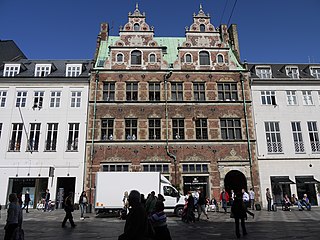
The Matthias Hansen House, formerly also known as the Schoustrup House, is a Renaissance-style townhouse on Amagertorv in central Copenhagen, Denmark. Built in 1616, it is one of few buildings of its kind which has survived the Copenhagen Fires of 1728 and 1795. The building is now home to a flagship store for the Royal Copenhagen porcelain factory.
Jan Persson worked as freelance photographer since 1962 for Danish newspapers and magazines in and around Copenhagen. Early on he specialized on documenting the jazz scene, later also the visiting beat and rock musicians who visited Copenhagen during the sixties and the seventies. His works have been documented in a series of books and exhibitions and his pictures are used on more than 1000 album and CD covers.
The following is a list of works about Amsterdam, Netherlands.

The 1926 KBUs Pokalturnering was the 17th edition of the regional tournament, KBUs Pokalturnering, the highest senior cup competition organised by the Copenhagen FA (KBU). The tournament was held in the fall of 1926 with BK Frem, then based on Enghavevej, as the defending cup champions. The season was launched with one match on 22 August 1926 between the last season's runners-up in Copenhagen Football League B.93 and the newly promoted league club BK Fremad Amager. This season's installment was won by B.93 after defeating Kjøbenhavns BK 5–1 in the final played at Københavns Idrætspark on 7 November 1926, which was the club's fifth cup title after having contested in eight finals of the tournament. The 8 participants in the tournament included the six members of the 1925–26 KBUs Mesterskabsrække and the two highest placed teams from the 1925–26 KBUs A-række.